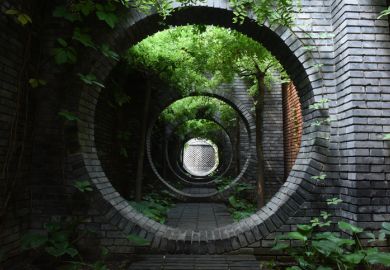This journal, which began in 1995, is part of "an aggressively expanding publishing program" in both books and journals of the Haworth Food Products Press. None the worse for that, if its contents really prove useful. Since the intention of the publishers is also to produce a journal of international interest, it addresses global problems.
The niche identified - I think correctly - by the publishers and editor is the worldwide concern among consumers and the environmentally aware to develop vegetable production systems that have less risk of putting undesirable agrochemicals into the food chain.
In the publish-or-perish world of modern academe, publication costs may increasingly have to be borne by the individual, or his or her institution, to maintain levels of output. Editor M. LeRon Robbins points out that some journals are then obliged to state that such sponsored papers are "advertisements". The Journal of Vegetable Crop Production has no truck with such practices.
The publishers have a particularly strong distribution and sales presence in the Pacific Ring states of South-east Asia where intensive vegetable raising has, in this reviewer's experience, produced particularly frightening levels of exposure among horticultural workers and consumers to toxic chemicals. To convey messages there about the safe production of vegetables is good news, though not necessarily for the chemical corporations.
The editor is director of the Calhoun Research Station of the Louisiana Agricultural Experiment Station. Robbins has travelled very widely as compared with many American vegetable agronomists, having worked in the Soviet Union, eastern Europe and Taiwan. He was agribusiness council advisor to the Farm Bureau.
The southern United States has not been without local problems caused by the over-use of pesticides. Louisiana may be an appropriate place from which to start a crusade, and I hope that is what Robbins has in mind, although he does not express his objectives in quite these terms.
The problem is how to get the right sort of geographical balance in journal contributions of sufficient quality to represent the worldwide perspective on this important subject. So far, there is a preponderance of papers from the south-eastern and southern United States - from Delaware, Louisiana, Alabama, Oklahoma and across to Arizona - though there are interesting contributions too from Alaska, Nova Scotia and New Brunswick in Canada, and Denmark, Greece and Saudi Arabia, as well as from major horticultural areas such as Ontario.
The contents are, or certainly should be, of interest to a far wider readership than the professional vegetable growers at whom this journal is primarily targeted. An alternative title such as "Eco-Friendly Vegetable Production" might have frightened off some contributors as well as readers, but may in time make a useful subtitle if the journal continues to flourish.
The flier for the first volume speaks of providing a forum for authors, including, the editor hopes, "mission and basic scientists" and legislators. (I think I am perhaps what Lousianans might call a "mission scientist".) What is surely far more important is that the journal is read and its warnings heeded. That is why, for this particular subject area, a tough and commercial approach to sales is to be welcomed.
The range of topics covered in the early issues is wide. Not all the contributions seem to fit well with the aim and strategy of the journal however.
One of the more interesting groups of papers, published over several issues, and which I would strongly recommend, is by Richard Parish and his associates at the Hammond Research Station in Louisiana. Parish wants to promote mechanical methods of weed control that he has developed over years, using much more sophisticated machines than old-fashioned mechanical hoes, so that herbicide use can be drastically reduced or eliminated.
I also particularly enjoyed reading a paper from Ontario looking into the financial returns during early transition from conventional to organic vegetable production. These are just the sorts of papers that many readers may be hoping to find if the new journal really meets its stated aims.
Intellectually, the journal is downmarket. The more academic among vegetable specialists may not find sufficiently sophisticated and rigorous science in it. But in Britain, at least, horticulture is not over-theoretical: it has flourished because it has kept its feet on the ground. In horticulture we have a virtually unsubsidised industry in amazing contrast with arable agriculture. Other folk, who might do well to understand more about techniques of vegetable production, may suppose that this is a scientific publication rather than a good magazine read and that it will be over their heads. It will not be. They will enjoy its contents.
There is a massive need in almost all fields of applied science for publications pitched in between academe and the popular press, through which what might be considered adult education can be promoted. Knowing how Chinese cabbages are produced in Norway, and probably similarly in Britain, should definitely be of interest to supermarket shoppers and cooks. The family-aimed glossies tend not to go far enough up the food chain.
Colin L. A. Leakey is an applied biologist specialising in the agricultural, food and industrial feed-stock aspects of pulses and leguminous oilseeds.
Journal of Vegetable Crop Production (twice a year)
Editor - M. LeRon Robbins
ISBN - ISSN 1049 6467
Publisher - Haworth
Price - $90 (libraries); $36 (indivs); $60 (instits)
Pages - -
Register to continue
Why register?
- Registration is free and only takes a moment
- Once registered, you can read 3 articles a month
- Sign up for our newsletter
Subscribe
Or subscribe for unlimited access to:
- Unlimited access to news, views, insights & reviews
- Digital editions
- Digital access to THE’s university and college rankings analysis
Already registered or a current subscriber?



